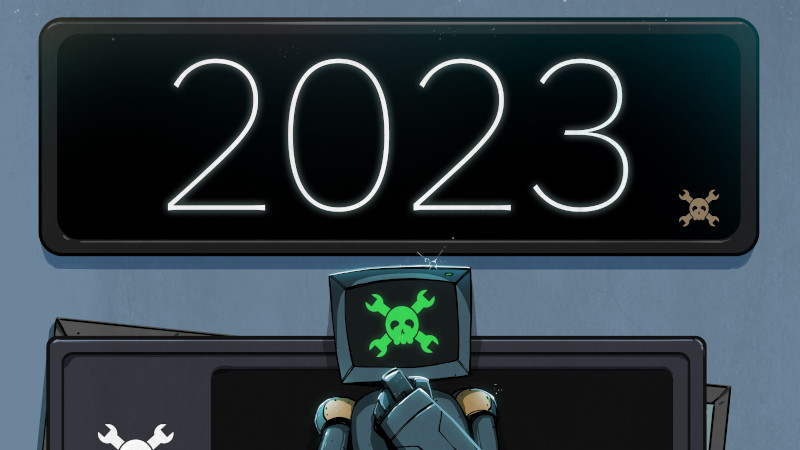
Well folks, we made it through another one. While it would be a stretch to call 2022 a good year for those of us in the hacking and making community, the light at the end of the tunnel does seem decidedly brighter now than it did this time 365 days ago. It might even be safe to show some legitimate optimism for the year ahead, but then again I was counting on my Tesla stocks to be a long-term investment, so what the hell do I know about predicting the future.
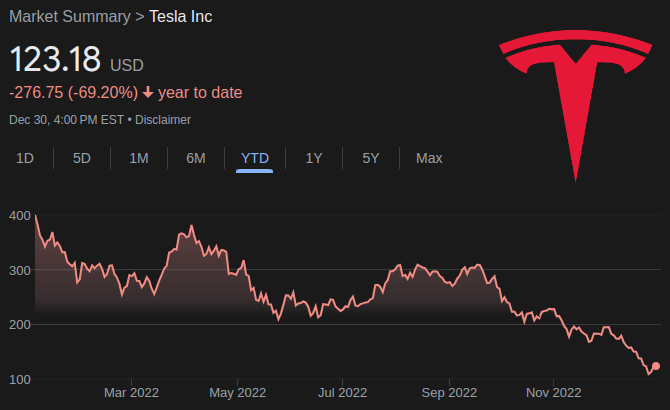
Thankfully hindsight always affords us a bit of wisdom, deservedly or otherwise. Now that 2022 is officially in the rearview mirror, it’s a good time to look back on the highs (and lows) of the last twelve months. Good or bad, these are the stories that will stick out in our collective minds when we think back on this period of our lives.
Oh sure, some might wish they could take the Men in Black route and forget these last few years ever happened, but it doesn’t work that way. In fact, given the tumultuous times we’re currently living in, it seems more likely than not that at some point we’ll find ourselves having to explain the whole thing to some future generation as they stare up at us wide-eyed around a roaring fire. Though with the way this timeline is going, the source of said fire might be the smoldering remains of an overturned urban assault robot that you just destroyed.
So while it’s still fresh in our minds, and before 2023 has a chance to impose any new disasters on us, let’s take a trip back through some of the biggest stories and themes of the last year.
The Chip Shortage Hits Home
Technically the origins of the chip shortage started well before 2022, and those with larger component appetites, like car manufacturers, started feeling the pressure some time ago. But 2022 marks the point where the problem got so large that even the hobbyist was impacted.
It’s to the point now that we’d wager few reading these words can say they’ve remained completely untouched. Case in point, have you tried to buy a Raspberry Pi recently? Unless you were willing to pay scalper prices on the second-hand market, they have been largely unobtainable for months. It’s bad enough that a service like rpilocator had to be created in the first place, but even with automated stock tracking, you’ve only got a few minutes to put your order in before they are sold out again.
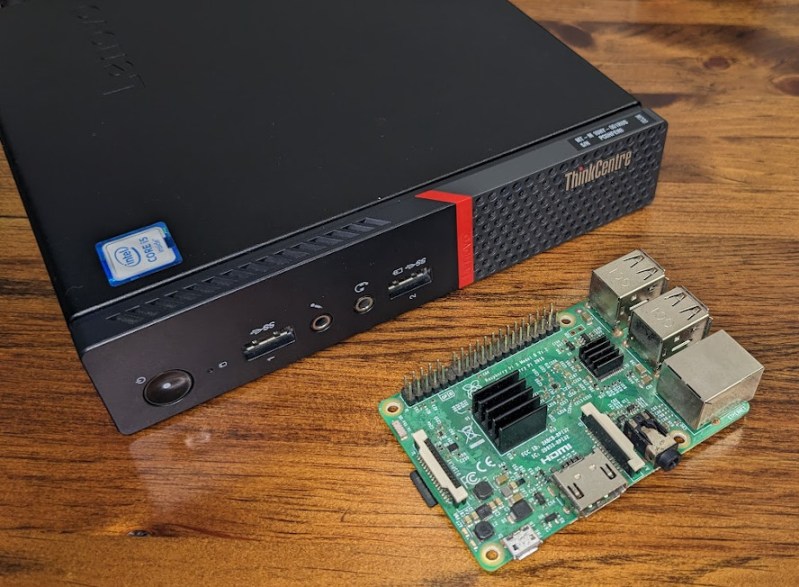
Without a steady supply of the cheap Linux single-board computers, many folks have switched over to buying old small form factor x86 computers for their projects. Just search eBay for “thin client” and take your pick — even the oldest ones you’re likely to see will still massively outperform the ARM chip in the Raspberry Pi.
There’s a certain irony to this, because unless you were doing something that actually utilized the unique properties of the Raspberry Pi (I.E. access to GPIO, SPI, I2C, etc), an outdated x86 box was probably always a better option to begin with.
Makes you wonder — had more people made this realization earlier on, maybe the demand for the things wouldn’t be so high in the first place…
But it’s not just Pis that have become difficult, or at least more expensive, to get our hands on — a wide array of once common components are now nearly unobtainable. To combat the situation, we’ve started to see some open hardware projects include a list of compatible replacement chips in their Bill of Materials, often listed in descending order of capability compared to the ideal component. We’ve even seen some boards ship with multiple footprints for the same part since it wasn’t clear which one would end up getting used by the time it was ready for assembly.
Seeing how the open source hardware world has responded to this unprecedented situation has been fascinating, and there’s an argument to be made that the lessons being learned will have a positive impact on the community going forward. After all, assuming that everyone who might want to use your design is fortunate enough to live in a place where resources like Digikey and Mouser are just a click away was always a pretty bold assumption. What we’re calling a part shortage is just business as usual for some folks out there, and being able to make do with what you have on-hand is a skill any good hacker should strive to master.
AI Tools Go Mainstream
While we’d heard rumblings about artificial intelligence text-to-image generators in 2021, it wasn’t until earlier this year that the floodgates really opened up. That’s when software like DALL-E, Midjourney, and Stable Diffusion became open to the public. Just a few months later, and social media is awash with dream-like images produced by increasingly bizarre text prompts.
Of course, these tools wouldn’t be nearly as popular if it wasn’t for the fact that the images generated are, in many cases, extremely impressive. While understandably rough around the edges at such an early juncture, there’s little doubt that the core technology is here to stay. From improving your photographs to creating virtual worlds out of song lyrics and generating textures for 3D environments, it’s a powerful tool that’s only going to get better with time.

But art isn’t the only thing that machine learning models have suddenly gotten very good at. In June Microsoft announced that GitHub Copilot, their AI-powered software development tool, was out of “technical preview” and ready for commercial use. Trained on the content of millions of open source GitHub repositories, Copilot is able to produce chunks of usable source code by predicting what the programmer is trying to accomplish.
The service immediately sparked controversy, as it would occasionally spit out a function pulled verbatim from an open source project — without crediting the original author or explaining the terms of the license it was released under. The resulting class-action lawsuit, filed early last month, was inevitable.
November also marked the public release of ChatGPT, which despite what its name might imply, is capable of quite a bit more than just shooting the breeze. In the weeks that it’s been available to the public, we’ve seen it write code, generate three-dimensional objects in OpenSCAD, and even act as a Linux virtual machine. But just like its image-generating kin, ChatGPT isn’t perfect. It makes assumptions and mistakes that might not seem obvious at first glance, so you’d do well to take what it spits out with a grain of salt.
Webb Shows its Stuff
Readers may recall that the James Webb Space Telescope (JWST) lifted off from French Guiana on Christmas Day of 2021. But by the time it completed the 1.5 million kilometer (930,000 mile) journey to the the Sun–Earth L2 Lagrange point, unfolded itself, and got all its hardware checked out, it wasn’t until the summer of 2022 that we were graced with the first proper images from the massive infrared observatory.

Graced might be something of an understatement — while there was never any doubt that the $10 billion JWST would provide unprecedented views of the cosmos — it didn’t make the reveal any less spectacular. The infrared telescope’s 6.5 meter (21 feet) gold-coated beryllium reflector allows it to see objects that were too faint or distant for the Hubble Space Telescope, which was already a very capable instrument.
Because of the immense distances involved versus the speed of light, that means the James Webb Space Telescope very literally allows humanity to see farther into the distant past than has ever been possible previously. The potential for new discoveries offered by the observatory simply can’t be overstated, and we’ve all got a front-row seat.
Electrify All the Things
While 2022 might not have been the year you personally moved on from the internal combustion engine, it certainly marked a turning point for the automotive industry. In the last twelve months, a lot of big promises have been made about electric vehicles (EVs), from California and the European Union banning the sale of gas cars and trucks beyond 2035, to Dodge announcing their iconic Charger and Challenger muscle cars will be retired this year as the brand moves towards an all-electric future. In a June interview, even Exxon Mobil CEO Darren Woods had to admit he believes all new passenger cars will be electric by 2040.

There’s two big takeaways from all this: first, the clock is ticking on that gas-burning ride you’ve got parked outside, and second, EV technology is going to have to get better and cheaper in a relatively short amount of time if the industry is going to be able to hit these lofty timetables. We’re already starting to see the needle move, with new lightweight motors, impressive range extension gains, and research into new battery technologies.
But it’s not just the cars themselves that are getting more advanced. In this brave new world, even the roads get in on the act, with pilot programs currently exploring the idea of embedding inductive charging coils into the surface. Millions of cars plugged into their chargers could also provide a nice buffer for the energy grid, so one day, vehicle-grid integration (VGI) might mean your car ends up powering the neighbor’s TV in the middle of the night.
Of course, it’s not all good news. Building these vehicles, and the infrastructure necessary to charge them, means the global demand for things like copper and cobalt will skyrocket. There’s also some worrying security implications of hastily-designed EV chargers getting plugged into the grid en masse.
The Return of Supercon
Of course, no highlight of the previous year in hardware hacking would be complete without mentioning the triumphant return of our very own Hackaday Supercon in Pasadena, California. While we’re immensely proud of the two Remoticons which were held virtually during the COVID-19 lockdowns, there’s simply no substitute for getting a few hundred hackers together in one spot for 72 hours of soldering, coding, and general nerdy merriment. Until Discord can adequately convey the smell of a Twinkie being roasted by a neon sign transformer, in-person events will always have the upper hand.
A particular highlight of this year’s Supercon was the incredible 4-bit badge designed by the legendary Voja Antonic. Whenever we put together an event badge, it’s our fervent hope that it becomes more than a temporary curiosity. We want our badge to stay out on your desk for as long as possible, and that means striking a careful balance — it should be just challenging enough to keep you engaged, but not so difficult that it becomes frustrating. From the response this badge got, it’s clear we hit the target.
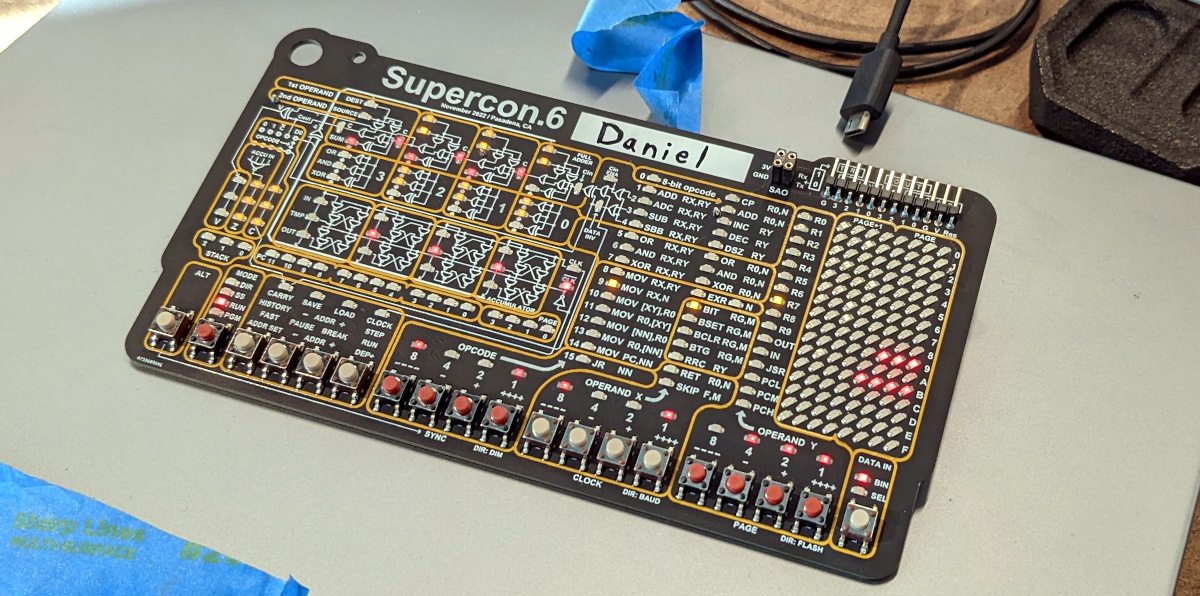
Badge hacking aside, it wouldn’t be Supercon without a slate of fascinating talks from talented hackers. For logistical reasons we could only live stream about half of them during the event, but don’t worry, every talk was recorded and we’re currently in the process of getting them edited and uploaded to the Hackaday YouTube channel.
In fact, some of them have already been released, such as Sam Mulvey’s talk on building your own FM radio station. We hope to release a couple talks a week from this point out, so stay tuned.
Share Your Memories
So what will stand out the most for you when you think back on 2022? Was it some personal triumph? The return of a favorite hacker con? Let us know in the comments. Even if you’re in the other camp, and this year treated you as poorly as the two that came before is, feel free to get it off your chest below. After all, if we don’t learn from history, we’re doomed to repeat it.
If you’re feeling particularly bold, we’d love to hear what your hopes are for 2023. After all, there’s no way this year could be worse than the ones we’ve just gone through…right?
2022: As The Hardware World Turns
Source: Manila Flash Report
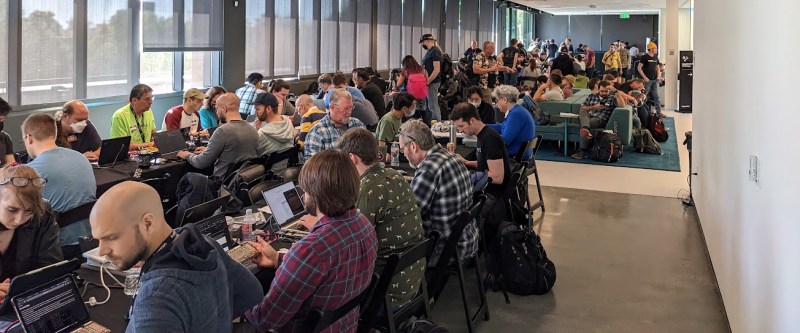
0 Comments